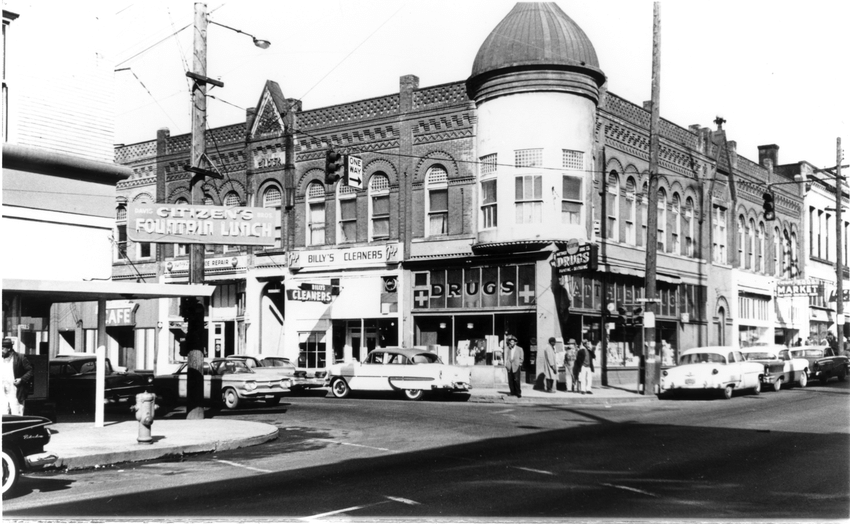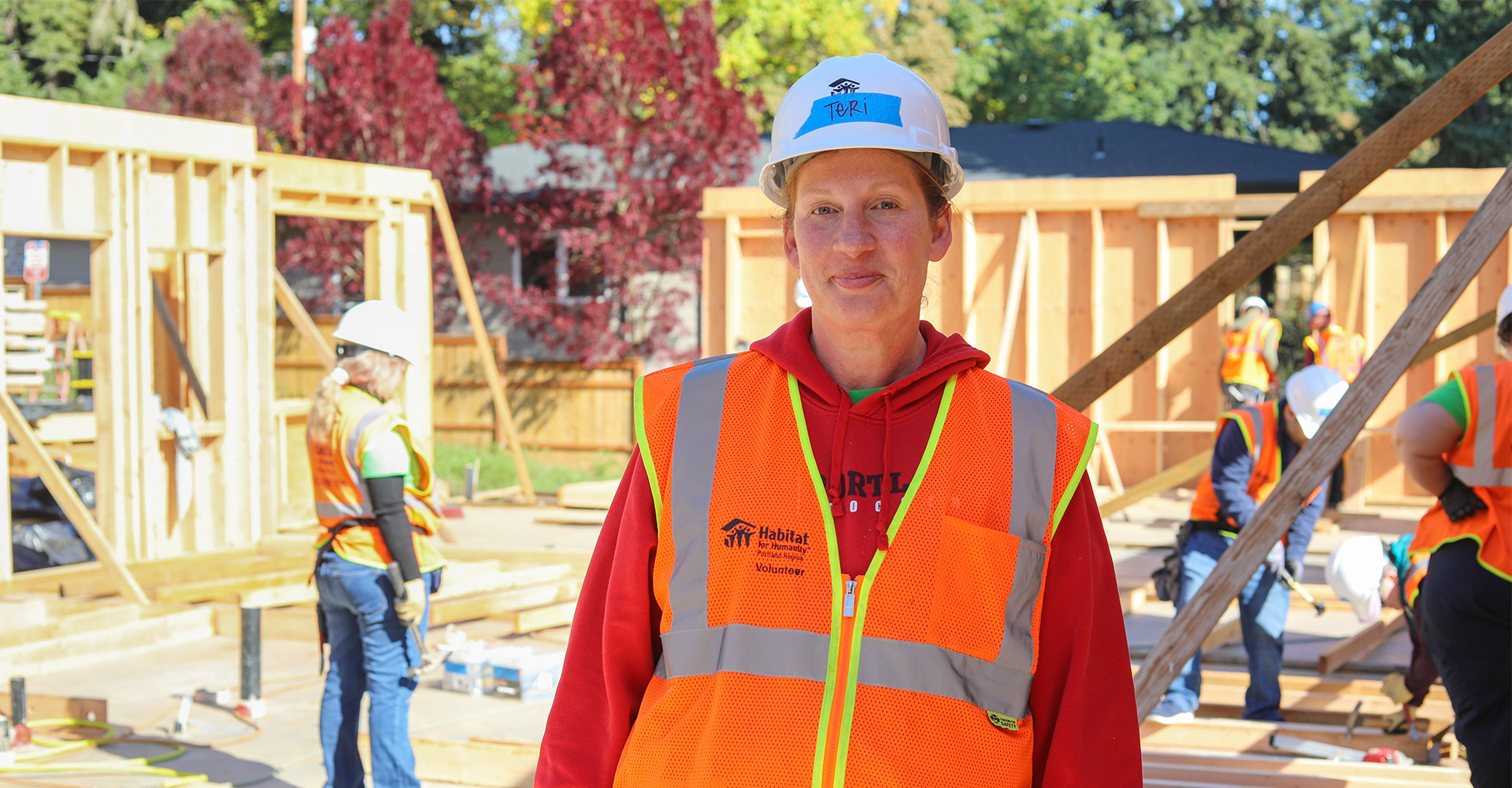
North and Northeast Portland — the heart of Portland’s Black community for over 60 years — lost two-thirds of its Black residents due to urban renewal and gentrification. Galvanized by a proposed below-market sale of a city-owned lot to a national retail chain, community leaders pushed to prioritize affordable housing to allow Black households to stay in and return to North and Northeast Portland — a shift away from the economic “revitalization” strategies that tended to drive up housing costs and benefit White-owned businesses. In 2014, Portland launched a groundbreaking approach to both preventing and redressing the city’s legacy of displacement of Black residents. The policy is two-fold, pairing a funding tool for affordable housing and a strategy to target those funds to address past and ongoing harm:
- Investing urban renewal (Tax Increment Finance) funds toward the construction of new affordable housing in North and Northeast Portland
- Prioritizing access to these homes to families and individuals with intergenerational ties to North and Northeast Portland neighborhoods.
Government-administered race-based preferences, even if designed to ameliorate racism, were legally vulnerable in 2014 when the Preference Policy was created and have become even less tenable after the U.S. Supreme Court’s decision limiting affirmative action in higher education last Spring. The Preference Policy, however, achieves race-centered outcomes without naming race. Preference Policy applicants must demonstrate that they themselves, their parents, and/or grandparents lived in the neighborhoods affected by urban renewal since the mid-1950s.
- Those with the longest ties to the most affected areas have priority access for new rental housing or homeownership opportunities.
- Families whose homes were condemned under the city’s eminent domain action receive the maximum priority.
A history of segregation and displacement:
Many Black families moved to Oregon to work in the Kaiser shipyards and live in the company town, Vanport, during World War II. When Vanport flooded in 1948, 18,000 residents were displaced.
Discrimination in real estate and lending kept Portland’s Black community concentrated in the Albina Neighborhood. In the 40s and 50s, the Albina Neighborhood generated many new Black-owned businesses that formed the hub of Black life in Portland. From medical offices, jazz clubs, barbershops, and grocery stores, Black-owned businesses lined Albina’s core intersection. Homeownership was on the rise for Black families. By 1960, 80% of Black Portlanders lived in Albina.
But there were challenges in Albina too. White flight led to vacant housing and the neighborhood was not prioritized for public investments in infrastructure, such as roads, schools, parks, and other amenities that enrich quality of life for residents. With cheap land and little political power, Albina stood as an easy prey for government-supported projects, including the Memorial Coliseum, Interstate-5, Highway 99, school district offices, Portland’s Water Bureau, and eventually the Emanuel Hospital Project. As each of these projects materialized, the city of Portland was quick to designate Albina’s cheap land as “blighted” making it institutionally easier to rezone it for demolition and commercial investment. The city used eminent domain to seize hundreds of majority Black-owned homes.
The Legacy Emanuel Hospital project marked a particularly egregious chapter in the Albina neighborhood’s history. Legacy Emanuel Hospital began displacing residents through intimidation in the 1950s, and then partnered with the city and the Portland Development Commission (now Prosper Portland) to forcibly seize homes through eminent domain through the 1960s and early 1970s. A pending lawsuit on behalf of descendants of those who were displaced, provides a detailed account of what residents lost – tight-knit communities where neighbors walked to Black churches together, patronized Black-owned businesses, and felt welcomed in their schools. Homeowners were hardly compensated (often receiving just a few thousand dollars) for homes that would now sell for over $500,000, and the area that was bulldozed has remained vacant to this day.
All told, over 1,100 homes in Albina were demolished by 1973, and the overwhelming majority of the losses were felt by Black homeowners.

Policies and Initiatives that are addressing this legacy:
The N/NE Preference Policy, which gives descendants of households that were displaced due to urban renewal priority for city-funded affordable housing in North and Northeast Portland, is one of several strategies and initiatives designed to address the lasting harm of displacement. Others include:
- Albina Vision Trust, a Black-led organization that serves as a steward for investments and visioning to redevelop lower Albina into a thriving residential neighborhood, welcoming to Black families and individuals, complete with arts and community spaces, and a connection to the riverfront.
- A lawsuit, filed by descendants of residents whose homes were bulldozed for an expansion of Emanuel Hospital that never materialized.
- A new housing development, the Williams & Russell Project, on land previously taken from 171 families that was returned to the community by Legacy Emanuel Hospital.
Alongside these community-led efforts, the city’s N/NE Preference Policy has achieved meaningful housing opportunities for people with deep ties to a neighborhood that is rich in both amenities and history:
- 501 new affordable rental units (with 212 in the planning phase)
- 42 new affordable homes for sale (with 52 in the planning phase). Habitat Portland Region has played a role as the builder (or future builder) of all 94 new affordable homes for sale through the Preference Policy. These homes (and all Habitat Portland Region homes) were developed in partnership with Proud Ground and use the community land trust model.”
- 121 new homebuyers
- 821 households assisted through grants and loans to repair their homes
Despite a race-neutral framework, the policy has served the target population. Portland State University’s study of residents in Preference Policy rental buildings found that most households who accessed housing through the program felt a connection to the neighborhood. Many families wanted their kids to attend historically Black schools and felt a sense of belonging in the place where they had generational roots.
Ongoing Challenges:
Despite these significant milestones, Portland’s Preference Policy marks the beginning, not the end, of the restorative justice journey in North and Northeast Portland.
Portland faces escalating housing costs that seem to outpace any investment, and the N/NE Preference Policy affordable rental apartments illustrate that challenge. Many more households apply than vacancies can accommodate, and even regulated “affordable” rents are too steep for many otherwise eligible individuals and families. For example, in August 2023 there were 393 applications for 36 vacant Preference Policy units, and only 1 approval. Some rejections are due to a mismatch between household size and bedroom count, but the primary driver is a mismatch between rents and household incomes. Most Preference Policy apartments are set at rent levels for households at 60% of Area Median Income (AMI) ($1,524 for a 2-bedroom apartment), which is too expensive for the average Black Portland household income of $3,000/month.
Similar access challenges exist on the homeownership side. Downpayment assistance through the Interstate TIF district provides $100,000 for families with incomes below 80% AMI. But, especially with today’s interest rates, homes in gentrified North and Northeast Portland simply are not affordable to families at that income level even with a $100,000 downpayment.
New affordable homes built for sale through the Preference Policy raise a robust discussion around full equity vs. community land trust models. Most government funding for homeownership requires a deed restriction to ensure lasting affordability. Through a Community Land Trust model, the public subsidy stays with the home. The homeowner agrees to a shared equity formula and the home’s resale price is capped, thereby preserving an inventory of affordable homes for future generations. In today’s housing context, a chance to own shared equity in a stacked condo or townhome is a coveted opportunity (Habitat Portland Region receives 800-1000 applications for every 60 available homes). The Community Land Trust model does not provide a one-for-one restoration of the assets that were unjustly seized. Many Black families owned their homes free and clear prior to the city’s seizure through eminent domain and lost an investment that would now be worth over $500,000.
On a broader scale, there’s also a fair critique of the fact that, like other public funding sources for affordable housing, the vast majority of public funds subject to the N/NE Preference Policy have been dedicated to rental developments. Stable, affordable housing in any form is a foundational component of household financial stability. But homeownership is the engine of generational wealth building for middle- and lower-income families in this country.
The historic theft of Black-owned homes in North and Northeast Portland is reflected today, with Black Portlanders owning homes at half the rate of White Portlanders. Gentrification and predatory lending arrived on the heels of urban renewal, contributing to the decline in Black homeownership. The demographics of homeownership in North and Northeast flipped in the 1990s, when Black-owned homes dropped 36% and White ownership rose by 43%, and the gap has not closed.
Conclusion
Anecdotally, it’s not uncommon for prospective Habitat homebuyers to state that they’d rather take their Preference Policy subsidy elsewhere – a neighborhood where they could buy a single-family home rather than a condo, or a community where they have current rather than historic ties. But PSU researchers, who have spent time with Preference Policy households over the past five years, found that many Black families with historic ties to N/NE Portland still feel a deep connection to these neighborhoods. For most of these households, there are pros and cons – they may appreciate the history, the centrality of the location, the historically Black public schools, but feel unwelcomed in local businesses, disconnected from their neighbors, and unsafe both in their buildings and on the streets.
From a dollars and cents perspective, it seems clear that both rental and homeownership housing options require a deeper subsidy in order to adequately meet the housing needs and aspirations of families and individuals who continue to feel the effects of racist housing practices in this area. How to build or restore an inclusive community, where diverse residents feel safe, stable, and connected – that’s clearly a much more complex question. At Habitat Portland Region, we are dedicating the coming year to engaging with the Black community to inform an Advancing Black Homeownership Initiative. With the help of a consultant, we’ll delve into how our current program succeeds and fails in serving Black households with generational ties to American racism. The resulting roadmap will guide our program design and investments as we continue to reckon with the heavy toll of historic and current injustice in housing.
For Further reading:
- Portland State University’s study of how the N/NE Preference Policy is working, and what else can be done to advance racial equity and build thriving neighborhoods: https://sites.google.com/pdx.edu/nnestudy/home
- Pleadings and video interviews with the Plaintiffs in the Oregon Law Center’s case on behalf of descendants displaced by the Legacy Emanuel Hospital project: https://oregonlawcenter.org/albina-displacement-lawsuit/
- Habitat for Humanity Portland Region’s Race and Housing series: https://habitatportlandregion.org/the-early-history-of-portlands-racist-housing-strategies-part-one/
- A profile of Deloris, a Habitat homebuyer: https://www.youtube.com/watch?v=L2aORxGCm-Q
- Bleeding Albina: A History of Community Disinvestment, 1940- 2000, by Karen Gibson: https://static1.squarespace.com/static/5ac943db2714e5f0e0fc7498/t/5ade19738a922dfbbb53092c/1524504949216/Bleeding+Albina+A+History+of+Community+Disinvestment.pdf
- Root Shocked, a documentary short about generational loss, racial disparity, and the steps taken by one family to force a city to reckon with its history: https://vimeo.com/343674629
- The Portland Housing Bureau’s 2022 State of Housing in Portland Report: https://www.portland.gov/phb/state-of-housing-report
- The City of Portland’s N/NE Neighborhood Housing Strategy: https://www.portland.gov/phb/nnehousing


